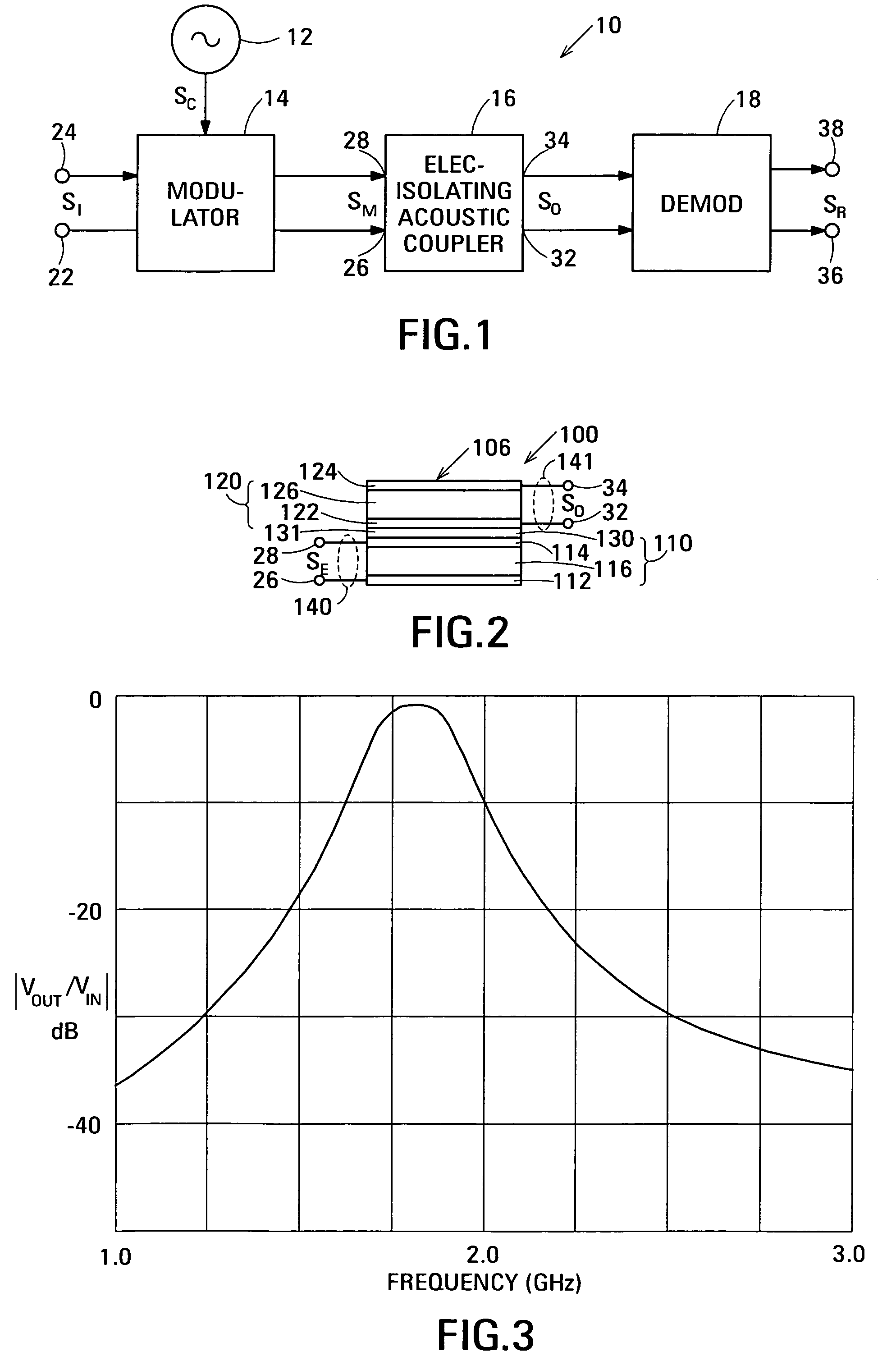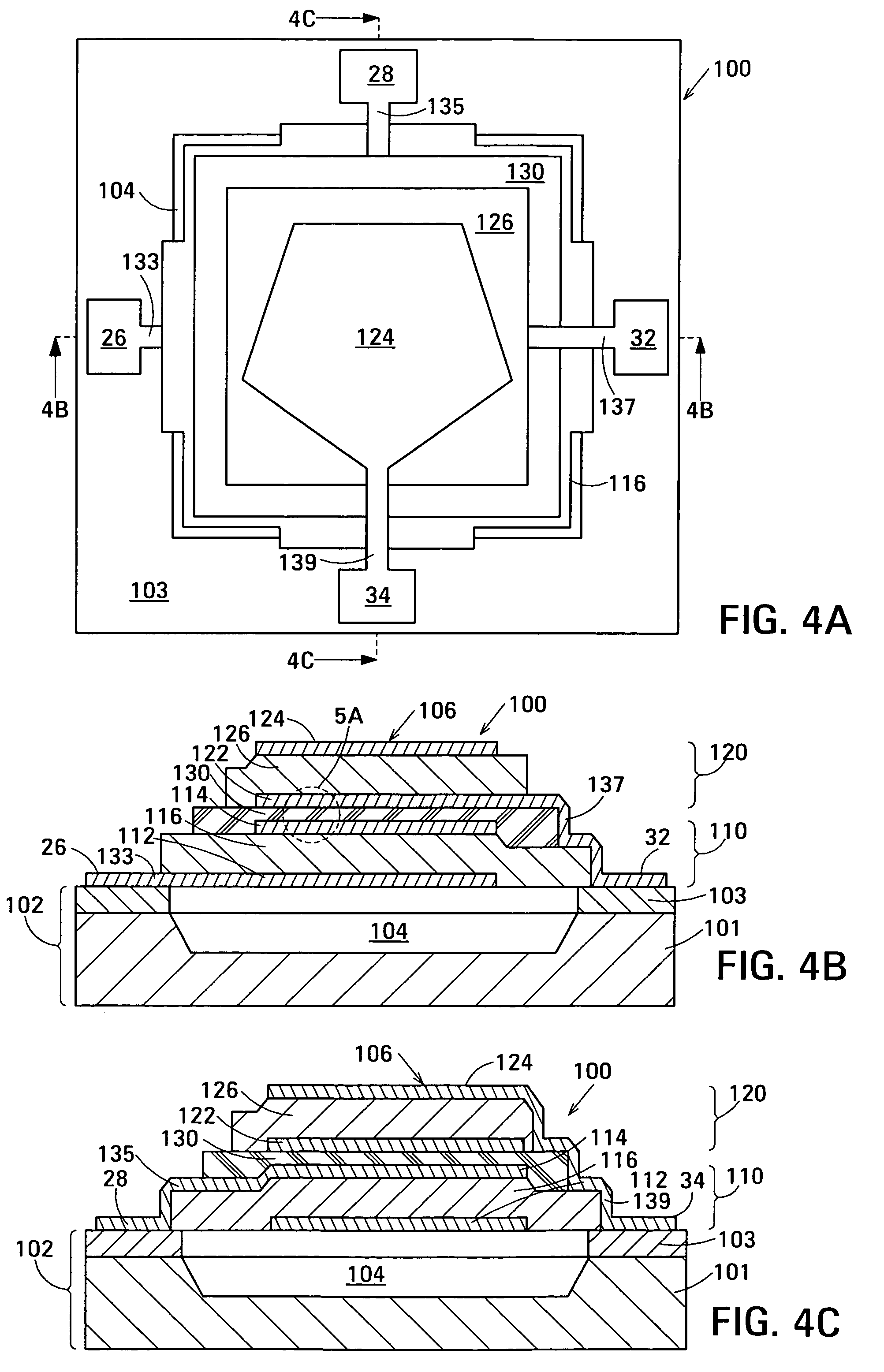Acoustic galvanic isolator incorporating single decoupled stacked bulk acoustic resonator
a technology of acoustic resonators and isolators, which is applied in piezoelectric/electrostrictive device details, impedence networks, device details, etc., can solve the problems of inconvenient fabrication, inconvenient use, and inability to provide an absolute break in the conduction path of capacitors, etc., and achieves the effect of being inexpensive to fabrica
- Summary
- Abstract
- Description
- Claims
- Application Information
AI Technical Summary
Benefits of technology
Problems solved by technology
Method used
Image
Examples
first embodiment
[0042]FIG. 5A is an enlarged view of the portion marked 5A in FIG. 4B showing electrically-insulating acoustic decoupler 130. In the embodiment shown in FIG. 5A, acoustic decoupler 130 is composed of an acoustic decoupling layer 131 of electrically-isolating acoustic decoupling material located between the electrodes 114 and 122 of FBARs 110 and 120, respectively. The acoustic decoupling material of acoustic decoupling layer 131 has an acoustic impedance intermediate between that of air and that of the materials of FBARs 110 and 120, and additionally has a high electrical resistivity and a high breakdown field.
[0043]The acoustic impedance of a material is the ratio of stress to particle velocity in the material and is measured in Rayleighs, abbreviated as rayl. The piezoelectric material of the piezoelectric elements 116 and 126 of FBARs 110 and 120, respectively is typically aluminum nitride (AIN) and the material of electrodes 112, 114, 122 and 124 is typically molybdenum (Mo). Th...
second embodiment
[0055]FIG. 5B is an enlarged view of the portion marked 5A in FIG. 4B showing electrically-insulating acoustic decoupler 130. In the embodiment shown in FIG. 5B, acoustic decoupler 130 is composed of an electrically-insulating acoustic Bragg structure 161. Electrically-insulating acoustic Bragg structure 161 comprises a low acoustic impedance Bragg element 163 located between high acoustic impedance Bragg elements 165 and 167. At least one of the Bragg elements 163, 165 and 167 of Bragg structure 161 comprises a layer of material having a high electrical resistivity, a low dielectric permittivity and a high breakdown field. Low acoustic impedance Bragg element 163 is a quarter-wave layer of a low acoustic impedance material whereas high acoustic impedance Bragg elements 165 and 167 are each a quarter-wave layer of high acoustic impedance material. The acoustic impedances of the materials of the Bragg elements are characterized as “low” and “high” with respect to one another and with...
PUM
 Login to View More
Login to View More Abstract
Description
Claims
Application Information
 Login to View More
Login to View More - R&D
- Intellectual Property
- Life Sciences
- Materials
- Tech Scout
- Unparalleled Data Quality
- Higher Quality Content
- 60% Fewer Hallucinations
Browse by: Latest US Patents, China's latest patents, Technical Efficacy Thesaurus, Application Domain, Technology Topic, Popular Technical Reports.
© 2025 PatSnap. All rights reserved.Legal|Privacy policy|Modern Slavery Act Transparency Statement|Sitemap|About US| Contact US: help@patsnap.com



